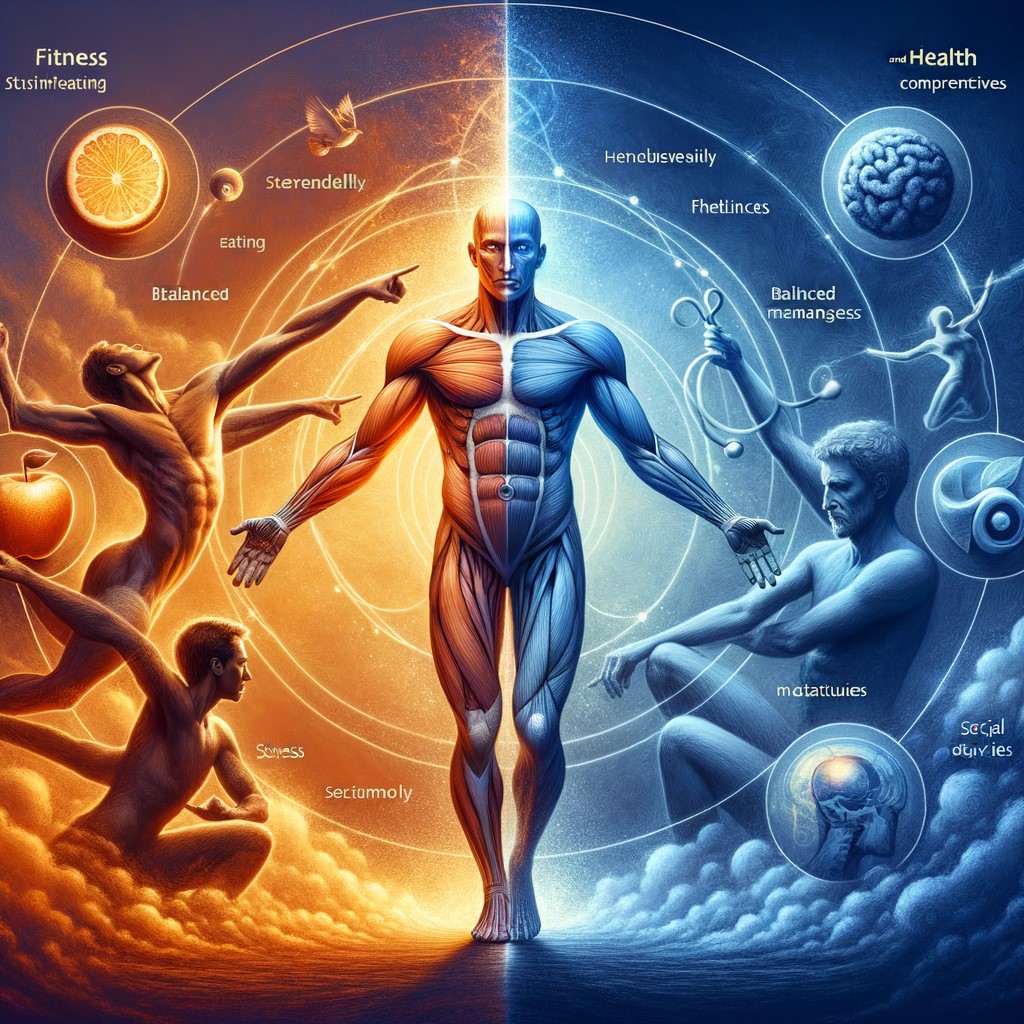In today’s fast-paced world, the terms “fitness” and “health” are often used interchangeably, yet they encompass distinct aspects of our well-being. Understanding the nuanced differences between these two concepts is crucial for anyone striving to achieve a balanced lifestyle. This article examines the intricate relationship between fitness and health, exploring whether one can exist without the other, debunking common myths, and providing practical strategies for achieving optimal wellness.
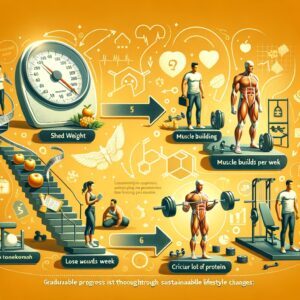
Craving success? Satisfy your ambition at Great Life Worldwide. Learn about the incredible opportunities and take a free tour now. Don’t delay!
1. Defining Fitness vs. Health: Understanding the Key Differences
Fitness and health, though often used interchangeably, represent distinct concepts that contribute to an individual’s overall well-being. Fitness primarily refers to a person’s physical capabilities and performance levels in activities such as strength, endurance, flexibility, and cardiovascular efficiency. It’s typically measured through specific exercises or tests that assess one’s ability to perform physical tasks effectively.
On the other hand, health encompasses a broader spectrum of factors affecting an individual’s quality of life. It includes not only physical well-being but also mental and emotional stability. Various factors, including genetics, lifestyle choices, environmental factors, and access to healthcare services, influence health. While fitness can be seen as a component of health, contributing positively to it, it doesn’t encompass all aspects necessary for complete wellness.
Understanding these differences is crucial for setting realistic goals and expectations when pursuing personal development in either area. For instance, someone may achieve high levels of fitness through rigorous training yet still face underlying health issues, such as stress or nutritional deficiencies, that require attention.
Moreover, while being fit generally supports good health by reducing the risks associated with chronic diseases, such as obesity or heart disease, optimal health requires more than just physical prowess—it demands balanced nutrition intake, adequate rest periods, and effective stress management techniques, among others.
In summary, while closely related and mutually beneficial, the terms “fitness” and “health” shouldn’t be conflated into a single concept without recognizing their distinct contributions to achieving holistic wellness objectives that are explicitly tailored to individual needs, preferences, and goals.
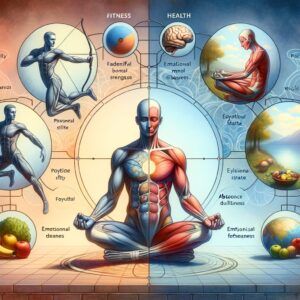
Time for a change? Make it count! Head to Great Life Worldwide and explore its exceptional opportunities. Take the free tour before time runs out!
2. The Interplay of Fitness and Health: Can You Have One Without the Other?
The relationship between fitness and health is intricate, often leading to confusion about whether one can exist without the other. While they’re closely related, they aren’t synonymous. Fitness primarily refers to physical capabilities—strength, endurance, and flexibility—and is typically achieved through regular exercise and physical activity. Health, on the other hand, encompasses a broader spectrum that includes mental well-being, emotional stability, social connections, and absence of disease.
It’s possible to be physically fit yet not entirely healthy if other aspects of health are neglected. For instance, an individual may have excellent cardiovascular endurance but suffer from chronic stress or poor nutrition habits that undermine overall health. Conversely, someone might maintain good general health with balanced nutrition and mental wellness, yet lack physical fitness due to a sedentary lifestyle.
The interplay between these two concepts becomes evident when considering how improvements in one area can positively influence the other. Regular exercise enhances cardiovascular function and muscular strength (fitness), which can reduce risks for various diseases such as hypertension or diabetes (health). Similarly, maintaining good mental health through stress management techniques, such as meditation or therapy, can improve motivation levels for engaging in physical activities.
However, achieving balance requires conscious effort; focusing solely on either fitness or health could lead to imbalances that are detrimental over time. A holistic approach that integrates both elements ensures sustainable well-being by addressing all facets of life, from diet and exercise routines to sleep patterns and emotional resilience.
In conclusion, while it’s feasible to experience one without fully embracing the other temporarily—such as being fit but stressed—it’s optimal for long-term vitality that individuals strive towards harmonizing their fitness endeavors with comprehensive health practices for a truly enriched quality of life.
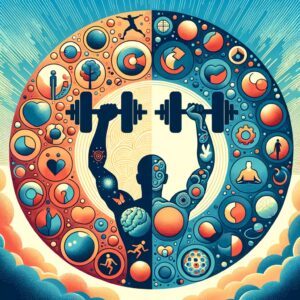
Success is within reach! Grab it at Great Life Worldwide and see how it can propel you forward. Don’t miss your chance for a free tour!
3. Achieving Optimal Wellness: Strategies to Become Super Fit and Healthy
Achieving optimal wellness requires a comprehensive approach that integrates both fitness and health into daily life. To achieve optimal fitness and health, it’s essential to adopt strategies that address physical activity, nutrition, mental well-being, and healthy lifestyle habits.
Firstly, regular physical activity is paramount. Engaging in a balanced exercise regimen that includes cardiovascular workouts, strength training, flexibility exercises, and balance activities can enhance overall fitness levels. Aim for at least 150 minutes of moderate aerobic exercise or 75 minutes of vigorous activity per week, as recommended by health guidelines. Incorporating variety in your workout routine not only prevents boredom but also ensures all muscle groups are engaged.
Nutrition plays a crucial role in achieving optimal wellness. A diet rich in whole foods—such as fruits, vegetables, lean proteins, whole grains, and healthy fats—provides the necessary nutrients to fuel the body efficiently. Staying hydrated by drinking plenty of water throughout the day supports metabolic processes and facilitates recovery after exercise.
Mental well-being should not be overlooked when striving for fitness and health excellence. Practices such as mindfulness meditation or yoga can reduce stress levels and improve mental clarity. Ensuring adequate sleep each night—ideally seven to nine hours—is crucial for recovery and maintaining energy levels.
Lifestyle habits also significantly impact one’s journey toward achieving a state of super fitness and health. Avoiding harmful behaviors like smoking or excessive alcohol consumption is vital for long-term health benefits. Additionally, setting realistic goals with measurable outcomes helps maintain motivation over time.
In summary, achieving optimal wellness involves a holistic approach that encompasses regular exercise routines tailored to individual needs, nutritious dietary choices, attention to mental health through relaxation techniques, sufficient rest, avoidance of detrimental habits, and goal-setting practices—all of which contribute synergistically to enhanced fitness levels and robust overall health.
4. Debunking Myths: Can a Person Be Overweight Yet Still Fit and Healthy?
The notion that fitness and health are exclusively tied to body weight is a pervasive myth that needs to be debunked. While societal standards often equate thinness with health, scientific evidence suggests otherwise. It’s entirely possible for an individual to be overweight yet still maintain a high level of fitness and overall well-being.
Fitness encompasses various components, including cardiovascular endurance, muscular strength, flexibility, and metabolic efficiency. An overweight person can excel in these areas through regular physical activity tailored to their capabilities. For instance, someone might have excellent cardiovascular health due to consistent aerobic exercises, such as swimming or cycling, while maintaining muscle strength through resistance training.
Health is multifaceted and extends beyond mere physical appearance or weight metrics, such as Body Mass Index (BMI). Factors such as blood pressure, cholesterol levels, glucose tolerance, mental well-being, and lifestyle habits play crucial roles in determining an individual’s overall health status. An individual may carry extra pounds but still exhibit healthy biomarkers if they engage in regular exercise, consume a balanced diet rich in nutrients, manage stress effectively, and avoid harmful behaviors like smoking or excessive alcohol consumption.
Moreover, the concept of “metabolically healthy obesity” has gained traction within medical research circles. This term describes individuals who are classified as obese based on BMI but don’t present typical obesity-related complications such as hypertension or insulin resistance.
In conclusion, it’s essential to challenge the preconception that weight is the sole indicator of fitness and health. Emphasizing holistic approaches that consider both physical activity levels and comprehensive wellness markers provides a more accurate representation of an individual’s true state of health, regardless of their size or shape.

Your success story starts here! Explore Great Life Worldwide to learn about the incredible opportunities. Claim your free tour before it’s too late!
5. Assessing Your Well-being: Indicators of a Fit and Healthy Body
Assessing your well-being involves understanding the various indicators that signify both fitness and health. While these terms are often used interchangeably, they encompass distinct aspects of overall wellness. A fit body typically exhibits physical capabilities such as strength, endurance, flexibility, and cardiovascular efficiency. These can be measured through performance metrics, such as VO2 max for aerobic capacity or one-rep max for muscular strength.
On the other hand, health is more comprehensive, encompassing not only physical but also mental and emotional dimensions. Key indicators of good health include normal blood pressure levels, balanced cholesterol ratios, stable blood sugar levels, and a healthy body mass index (BMI). Regular medical checkups can help monitor these parameters to ensure they remain within optimal ranges.
Additionally, subjective measures play an essential role in assessing well-being. Energy levels throughout the day can indicate how effectively your body is functioning; consistently high energy suggests efficient metabolic processes and adequate nutrition intake. Quality sleep is another crucial factor—restorative sleep cycles contribute significantly to both mental clarity and physical recovery.
Mental health shouldn’t be overlooked when evaluating overall well-being. Emotional resilience, stress management abilities, and general life satisfaction are vital components that reflect a healthy mind-body connection.
Lastly, lifestyle habits serve as practical indicators of fitness and health status. A balanced diet rich in nutrients supports bodily functions, while regular exercise promotes cardiovascular fitness and muscle maintenance. Avoidance of harmful behaviors such as smoking or excessive alcohol consumption further underscores commitment to long-term wellness.
In summary, assessing your well-being requires a holistic approach that considers both objective measurements and subjective experiences to paint a comprehensive picture of what it means to be truly fit and healthy.
6. Balancing Act: Is It Better to Prioritize Fitness or Overall Health?
In the pursuit of well-being, individuals often grapple with whether to prioritize fitness or overall health. While these concepts are interrelated, they are not synonymous and require distinct approaches for optimal results. Fitness typically refers to physical capabilities, including strength, endurance, and flexibility. In contrast, overall health encompasses a broader spectrum, including mental, emotional, and social well-being.
Prioritizing fitness can lead to impressive physical achievements and improvements in cardiovascular health, muscle tone, and energy levels. However, an exclusive focus on fitness may inadvertently neglect other crucial aspects of health, such as nutritional balance, mental resilience, and stress management. For instance, excessive exercise without adequate recovery can lead to burnout or injury, counterproductive outcomes that undermine both fitness goals and overall health.
Conversely, prioritizing overall health involves adopting a holistic approach that integrates various dimensions of wellness beyond just physical activity. This includes maintaining a balanced diet rich in essential nutrients for bodily functions, ensuring sufficient sleep for recovery, managing stress through mindfulness practices, fostering positive relationships, and seeking regular medical checkups for preventive care.
The ideal strategy is not about choosing one over the other but finding an equilibrium between the two. A balanced approach acknowledges that while being physically fit contributes significantly to one’s quality of life by enhancing mobility and reducing disease risk factors, such as obesity or hypertension, it should complement rather than overshadow comprehensive health practices.
Ultimately, achieving this balance requires personalized strategies tailored to individual needs and lifestyles. Consulting healthcare professionals can provide valuable insights into creating sustainable routines that harmonize fitness pursuits with overarching health objectives, ensuring long-term vitality rather than short-lived gains in either domain alone.
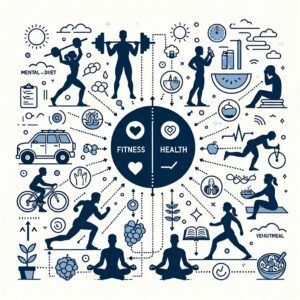
Unleash your inner champion! Discover how at Great Life Worldwide and see why it’s your winning team. Take the free tour today!
7. Sustainable Practices for Staying Fit and Healthy in Everyday Life
Incorporating sustainable practices into your daily routine is crucial for maintaining both physical fitness and overall health in the long term. The key lies in adopting habits that are not only effective but also enjoyable, ensuring they become a seamless part of your lifestyle rather than a temporary fix.
Firstly, prioritize consistency over intensity. Establishing a regular exercise schedule that fits comfortably within your life is more beneficial than sporadic bursts of intense activity. Aim for at least 150 minutes of moderate aerobic activity or 75 minutes of vigorous activity each week, as recommended by health experts. This can be broken down into manageable sessions throughout the week to suit your personal schedule.
Nutrition plays a crucial role in sustaining both fitness and health. Focus on a balanced diet rich in whole foods—fruits, vegetables, lean proteins, whole grains, and healthy fats—to provide the necessary nutrients without excess calories. Mindful eating practices, such as listening to hunger cues and savoring meals, can help prevent overeating and promote better digestion.
Hydration is another fundamental aspect often overlooked. Adequate water intake supports metabolic processes and enhances physical performance while helping to maintain energy levels throughout the day.
Sleep shouldn’t be underestimated either; it’s vital for recovery and overall well-being. Strive for seven to nine hours of quality sleep per night, allowing your body ample time to repair itself from daily stresses.
Lastly, incorporate stress management techniques, such as meditation or yoga, into your routine to support both mental and physical wellness. These practices help reduce cortisol levels—a hormone linked with stress—and improve mood stability.
By incorporating these sustainable habits into your everyday life, you establish a robust foundation that supports ongoing fitness improvements while safeguarding long-term health outcomes.
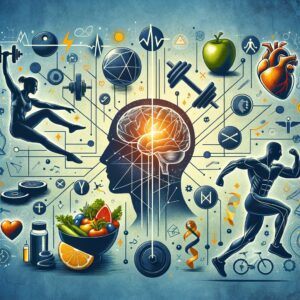
Your future is knocking! Answer at Great Life Worldwide and see how it can open doors for you. Free tour available – seize the moment!
Conclusion:
Ultimately, while fitness and health are interconnected facets of overall well-being, recognizing their unique contributions allows individuals to tailor their approach towards a more holistic lifestyle. By integrating sustainable practices that address both physical capabilities and comprehensive health markers—ranging from mental resilience to nutritional balance—individuals can cultivate long-term vitality. Embracing this balanced perspective not only enhances quality of life but also ensures enduring wellness in an ever-evolving world.

